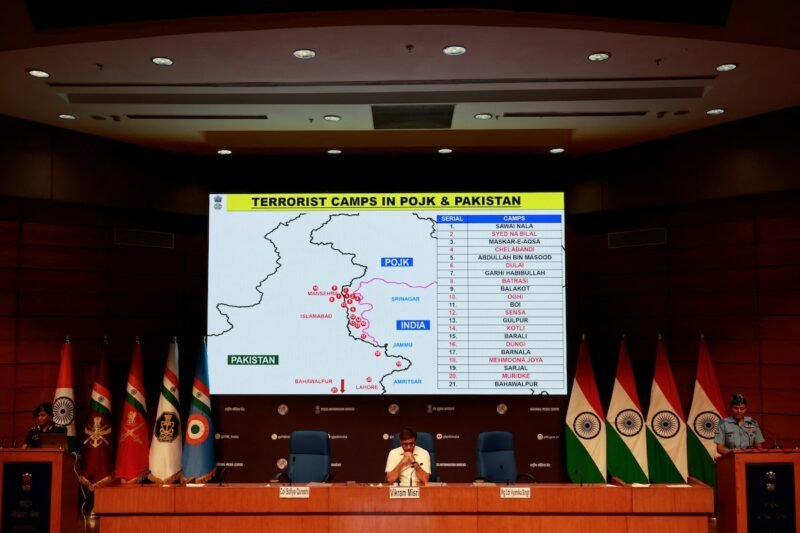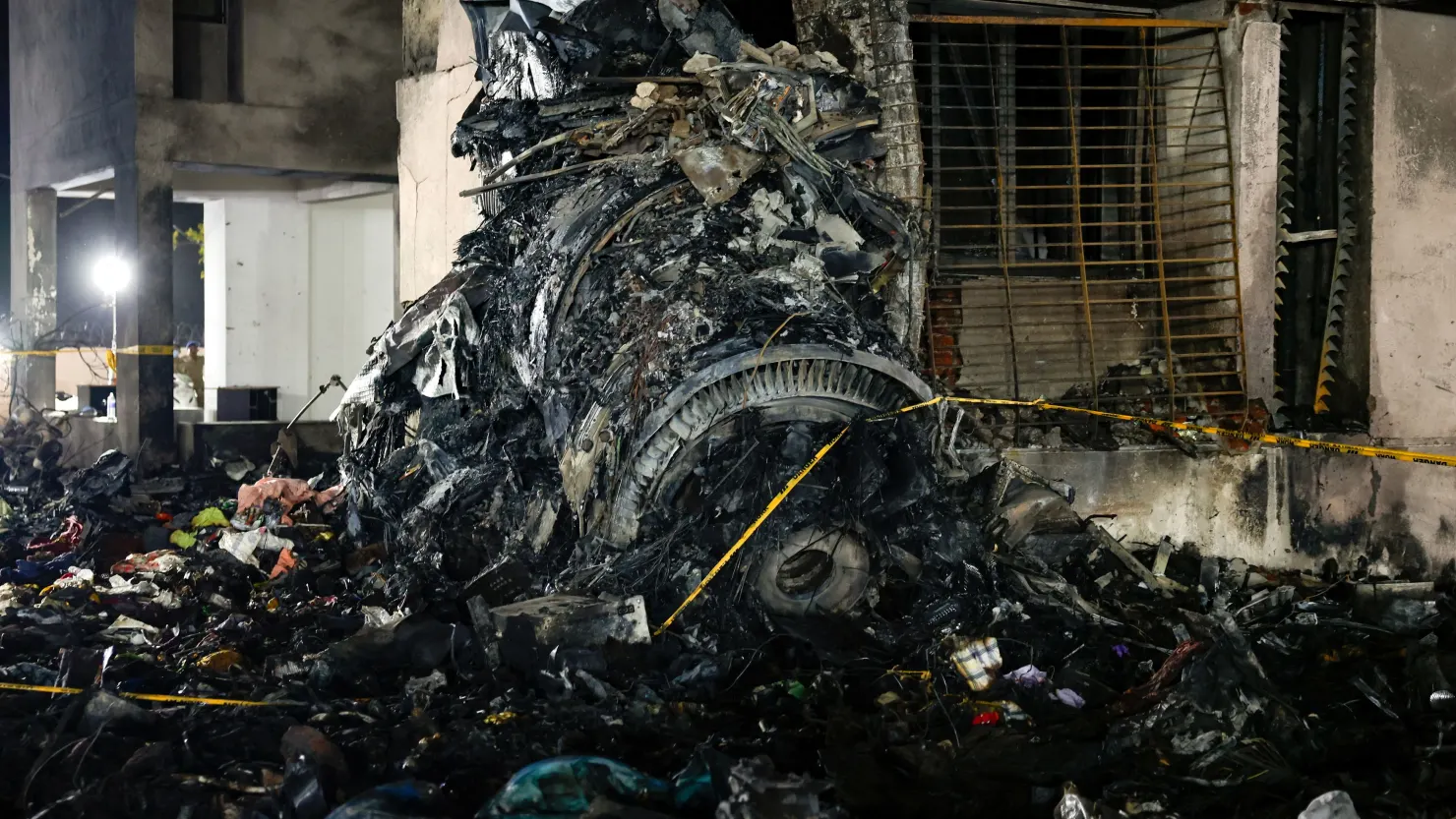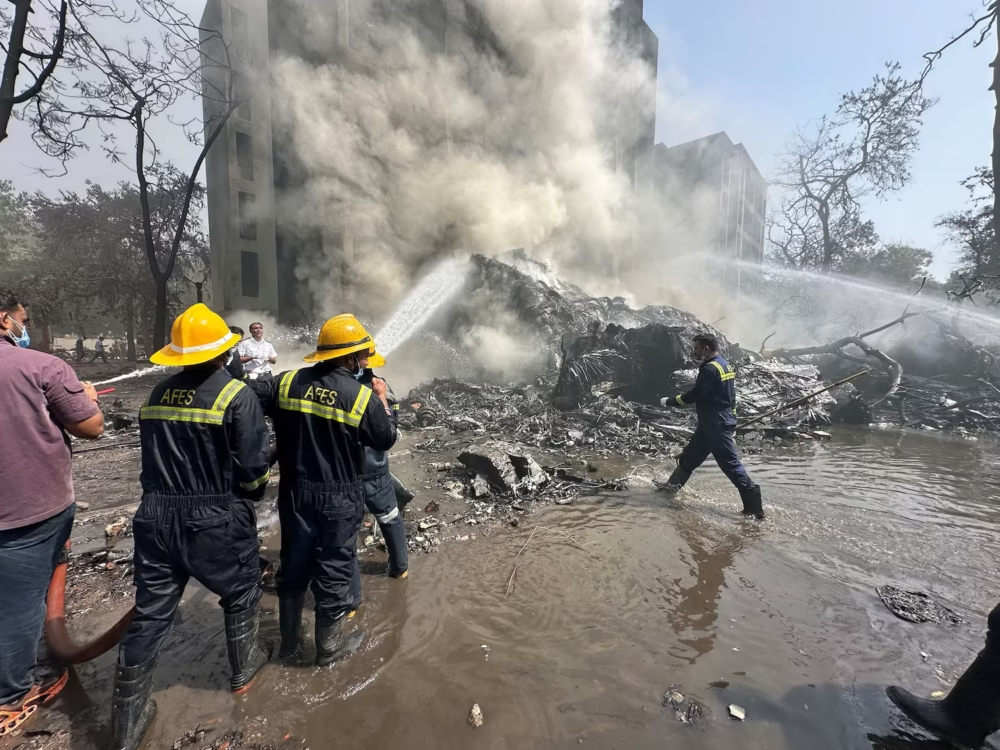Analysis
India’s Strategic Restraint: Why the Conflict With Pakistan May Stay Contained

India’s calibrated strikes and disciplined messaging show a mature, responsible power at work—unlike Pakistan’s volatile, military-driven reaction model.
Despite rising tensions along the Line of Control, there remains cautious optimism that the current Indo-Pak standoff will not escalate into full-scale war. The reason? India’s strategic restraint, precision targeting, and clear signalling.
India has once again demonstrated that it is the adult in the room, choosing to strike at terrorist infrastructure rather than military installations. This is not just about optics; it reflects a deeply calculated effort to climb the escalation ladder responsibly—asserting strength without triggering a conventional or nuclear conflict.
In a world where one miscalculation could spark uncontrollable fallout, India’s approach shows the discipline of a power that understands the cost of uncontrolled aggression.
Striking With Precision, Not Provocation
India’s official statements have carefully emphasised that only terrorist camps were targeted—not Pakistani army posts or civilian infrastructure. This messaging is important. It reinforces India’s position as a nation responding to terror, not provoking a war. The real strategic brilliance lies in showing resolve without inviting escalation.
Compare this with Pakistan’s lack of institutional coordination, where military narratives often overrun diplomatic rationality. Civilian leadership appears sidelined, while the military establishment defaults to outdated tactics that blur the line between state and proxy action.
Escalation Is Always a Risk—But Not Because of India
Yes, escalation remains a concern. In a nuclearized region, even limited tit-for-tat actions can spiral out of control if left unchecked. But in this case, India has done the hard work of containing the battlefield—geographically, militarily, and diplomatically.
The wildcard lies not in New Delhi’s restraint, but in Islamabad’s desperation. With minimal global pressure and growing internal instability, Pakistan may choose provocation over prudence—especially to appease domestic constituencies or distract from its collapsing economy.
Nationalism: Constructive in Delhi, Destructive in Islamabad
Both India and Pakistan have vocal nationalist elements. But while India’s nationalism fuels strategic modernization, Pakistan’s often serves to deflect from governance failures and economic freefall.
India’s national security doctrine under Prime Minister Modi has evolved—it is now about precision, deterrence, and global positioning, not loud sabre-rattling.
Kashmir: The Litmus Test of Containment
Historically, Kashmir has been the ignition point of Indo-Pak confrontations. As one analyst put it, “In the bad old days… casualties across the Kashmir border were routine.” Today, there are still flare-ups, but the fact that attacks remain localized and don’t target core military installations is evidence that India is actively managing escalation.
This measured response is not just good military policy—it’s smart global diplomacy.

Conclusion: Strategic Maturity Wins Wars Before They Start
India’s actions speak louder than slogans. It has chosen restraint over recklessness, surgical precision over symbolic aggression, and long-term strategic advantage over short-term political gain.
If the conflict remains contained—and there’s every reason to believe it will—it will be because India chose wisdom when it had the capacity for war.
#IndiaPakistanTensions
#StrategicRestraint
#operationsindoor
#IndiaFirst
#SouthAsiaSecurity
#KashmirConflict
#PrecisionStrike
Analysis
Apple’s Indian Experiment: Can the iPhone Spark a Nation’s Innovation Renaissance

As Apple deepens its footprint in India, a bigger question emerges—can India move from assembling iconic devices to inventing the next wave of global tech?
By The Cover Story World Global Desk
June 15, 2025
A Factory That Hums with More Than Assembly Lines
It started as a strategic shift. Seeking diversification beyond China, Apple began ramping up iPhone production in India. Now, almost one in five iPhones worldwide is assembled on Indian soil. But this is no longer just a manufacturing story—it’s a turning point in India’s economic and technological narrative.
Apple isn’t just assembling devices in India. It’s building an ecosystem.
Behind every polished phone lies a rising army of local engineers, developers, logistics professionals, and component suppliers. The question now is not whether India can build. It’s whether India can innovate—and whether Apple will be the unlikely spark that ignites that transformation.
Apple’s Ecosystem Effect: More Than Just Jobs
Apple has always been more than a manufacturer—it’s a system-builder. And in India, that system is starting to bear fruit. From industrial training centers to small and mid-sized suppliers learning to meet Cupertino’s famously exacting standards, Apple is indirectly catalyzing a wave of capability upgrades across the board.
When a $3 trillion brand arrives, it doesn’t just bring dollars. It brings discipline, design principles, and the pressure to think bigger.
And India is responding.

Can the iPhone Spark a Nation’s Innovation Renaissance
The Rise of a New Tech Ambition
The Apple effect has galvanized other tech giants, startups, and policymakers to imagine a different future: not just assembling the world’s products, but inventing them. As Apple scales its operations—from assembly lines to developer academies and local app ecosystems—India’s own confidence in design-led innovation is rising.
Indian engineers who once supported backend systems are now contributing to core features, AI tools, and user experience design. The transfer of knowledge is slow, but real.
It’s not far-fetched to imagine a day when an iPhone feature is not only made in India—but imagined here.
From Digital Infrastructure to Digital Ingenuity
Apple’s expansion coincides with India’s bold digital leap. With hundreds of millions now plugged into mobile internet and a vibrant digital payment ecosystem, the conditions are ripe for innovation. The foundations—data access, payment rails, consumer appetite—are robust.
The challenge? Turning those digital roads into runways for takeoff.
Apple has shown that world-class products can be built in India. The next step is world-class ideas.
The R&D Gap: Still a Hurdle to Cross
Despite the momentum, India still trails global peers in research and development investment. While Apple contributes significantly to local employment and technology transfer, building an innovation economy will require bolder steps—deep-tech investments, stronger university-industry ties, and a regulatory environment that rewards invention.
What’s needed is a culture of experimentation—of failing forward. Apple’s presence helps, but the movement must be broader and deeper.
The Bigger Picture: Why Apple’s Bet Matters
Apple’s India story is about more than logistics or cost. It’s a vote of confidence in India’s ability to move up the value chain—from sweat to smarts.
If India succeeds, it won’t just be a nation where iPhones are made. It’ll be a place where ideas that power future generations of iPhones—and much more—are born.
In Apple’s glass and steel manufacturing floors, India sees its own reflection. Not just as a supplier, but as a creator.
And in that mirror lies the future.
Analysis
Why Air India’s Tragedy Could Reshape the Tata Group’s Aviation Ambitions

How the fatal crash of Flight AI171 threatens Tata’s bold aviation revival—raising urgent questions about safety, oversight, and the future of Air India.
The Takeoff That Never Found the Sky
Ahmedabad, June 12, 2025 — It was supposed to be just another journey in a rapidly modernizing Indian skies. At 1:39 PM IST, Air India Flight AI171—a Boeing 787-8 Dreamliner with the tail number VT-ANB—gathered speed on Runway 23, bound for London Gatwick.
On board were 230 passengers and 12 crew members. Families returning home, business travelers, and students filled the cabin—Indian, British, Portuguese, and Canadian nationals alike.
But just 30 seconds into flight, before the aircraft could truly lift into the blue, it began a silent, deadly descent. From a brief peak of around 625 feet, the Dreamliner dropped at a rate of 475 feet per minute. Seconds later, it disappeared from radar and slammed into a medical hostel near B.J. Medical College—just two kilometers from the airport.
In an instant, the tragedy claimed 241 lives in the sky and at least 28 on the ground. Among the lost: former Gujarat Chief Minister Vijay Rupani, who had boarded with minimal security in an understated departure.
Only one survivor was pulled from the wreckage: 28-year-old Vishwash Kumar Ramesh, seated in 11A. Rescued hours later by emergency teams, his survival has come to symbolize not just fate’s cruelty, but its unpredictable mercy.
As smoke curled into the sky above Ahmedabad, questions fell even faster than the wreckage. Was it pilot error? A technical fault? Did the aircraft ever have a fighting chance?

Rescue team members work as smoke rises at the site where an Air India plane crashed in Ahmedabad, India, June 12, 2025. Amit Dave:Reuters
A Dreamliner Disaster, A Strategic Earthquake
This wasn’t just a plane crash. It was a direct blow to one of India’s most ambitious corporate projects: the Tata Group’s aviation renaissance.
After reclaiming Air India from government ownership in 2022, Tata Sons launched a sweeping vision. With billions in aircraft orders, premium branding, and a commitment to unite India’s fragmented air travel landscape, the goal was clear: make Air India a global powerhouse.
But this tragedy threatens to ground more than a plane. It shakes the very idea that India’s aviation sector is ready for international prestige.
Dreams of a New Sky Meet the Weight of Reality
A Perfect Storm of Aspirations and Assumptions
In recent months, Air India had been rolling out new long-haul routes and touting its transformation. Sleek new ads, revamped lounges, and redesigned uniforms hinted at a renaissance. But the crash casts a long shadow.
Public perception—of safety, of competence, of Tata’s readiness—is now in question.
A Fleet in the Spotlight
Tata’s bet was heavily placed on a modern, tech-savvy fleet. Hundreds of Boeing and Airbus jets had been ordered, forming the backbone of its global ambitions.
Now, those decisions are under review. Boeing—still under scrutiny worldwide for previous manufacturing lapses—will have its reliability reevaluated in the Indian context. What was once seen as a smart fleet refresh is now tangled with questions of safety checks, procurement transparency, and regulatory oversight.
Leadership at a Crossroads
CEO Campbell Wilson and Tata Chairman N. Chandrasekaran now face the most sobering challenge of their aviation stewardship.
Did growth outpace governance? Were safety protocols and crew preparedness given the same urgency as business expansion?
More broadly, how does a brand built on trust respond when that very trust is shaken?
The Warnings Were There—But Were They Heard?
For months—if not years—aviation insiders had flagged concerns.
Engineers and whistleblowers warned of deferred maintenance, overstretched training programs, and a DGCA (Directorate General of Civil Aviation) struggling to balance oversight with a booming air travel market.
In the race to make Air India “world-class,” critics say the fundamentals may have been compromised. The very culture of accountability may have taken a backseat to optics.
Repercussions Beyond the Runway
The immediate fallout is devastating. Insurance liabilities could top billions. Dozens of nations are demanding answers.
But the deeper cost may lie in trust—from investors, from passengers, from global partners.
This was supposed to be India’s aviation moment. The country is the world’s fastest-growing air travel market, and Air India, under Tata, was meant to lead that charge.
Now, every aspect of that vision must be reexamined. Not abandoned—but rebuilt, with greater humility and deeper rigor.
A Moment of Reckoning—and Redefinition
What does it mean to build a world-class airline in today’s India?
It’s more than wide-body jets and Michelin-star menus in business class. It’s about safety, culture, transparency, and people. It’s about remembering that every seat sold is a life entrusted.
The crash of AI171 will become a case study—not just in aviation safety, but in corporate responsibility. It will be discussed in boardrooms, classrooms, and living rooms alike.
Can the Vision Still Fly?
The tragedy of Flight AI171 has done more than shake Air India’s reputation—it has tested the very soul of the Tata Group’s aviation ambitions.
The black boxes may eventually tell us what happened that day. But the more important answers will come in the months that follow: how Tata responds, how systems reform, and whether India’s flag carrier can rise again—not just in the skies, but in the hearts of its people.
The runway to global greatness is still there. The question is: can it be safely reached?
Final Thoughts
Crashes define more than a moment. They reveal what was broken long before impact—and what must be rebuilt after. The Tata Group, and India’s aviation story, now stand at a pivotal junction. One where leadership, trust, and action will speak louder than ambition ever could.
-

 Leaders Story4 months ago
Leaders Story4 months agoThe Cover Story World Best Leaders 2025, Yalda Hakim: The Voice That Can’t Be Ignored
-

 Business Story5 months ago
Business Story5 months agoAI Integration in Indian SMEs: Revolutionizing Traditional Business Models
-

 Business Story5 months ago
Business Story5 months agoMAG Signs Strategic Partnership with MultiBank Group to Tokenize $3 Billion Real Estate Assets
-

 Business Story4 months ago
Business Story4 months agoAmrit Acharya: Building the Infrastructure of a New World
-

 Business Story5 months ago
Business Story5 months agoEducation Technology: Bridging Learning Gaps in the Digital Age
-

 The Cover Story1 year ago
The Cover Story1 year agoTop 10 Game-Changing Business Trends to Watch Out for in 2024
-

 Brand Story1 year ago
Brand Story1 year agoThe Best 30 Emerging Indian Brands: Innovators Shaping the Future
-

 Business Story5 months ago
Business Story5 months agoRemote Work Evolution: How Indian Corporates Are Redefining Workspaces














